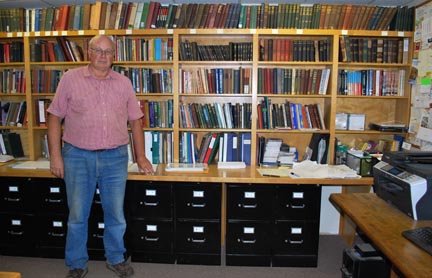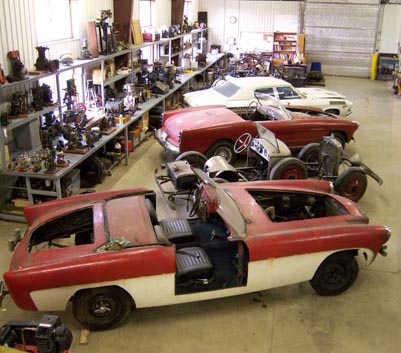About Us
I am a University of Michigan history graduate with an interest in thermodynamics and mechanical things. I thought it would be easy and fun to make steam engines. After thinking about it for a while I decided that it would be easier and funner to find something that worked and then to improve upon it, under the theory that people working on steam prior to myself were neither as smart nor as creative as I am. I thought, and still think, that steam is magic--to light a fire and make power. Now I think that it is going to be the salvation of the world. |
||
| My shop and library are open for anyone to visit and look at. After a few days, and depending on the sociability of the visitor, I will start running the meter. What I want to do is to assist others interested in steam power so as they do not waste their time and money on bad ideas. In steam there are many more bad ideas than good ideas and the bad ones all look more appealing to the new person. The real purpose of the steam information collection is to lure people into coming to visit because it is lonely out here in rural Michigan. | ||
 |
Right now I am organizing my information and conducting interviews in order to write a book. I tell my wife that the book will make me rich. She reminds me that I made the error years ago of marrying an intelligent woman. My other goal is to make a museum so that the information I have can be displayed in an educational manner. We will have running lawn mowers and tractors and electrical generating power plants burning wood chips and everything. Money for the museum will have to come from somewhere besides me because my resources are going into keeping what I have going. | |
This should explain what you see on my website. Tom Kimmel Click here to contact Tom |
||
Vision: Steam power is practical.It is the only presently practical way to turn bio-fuels into mechanical motion. Thus, steam power allows the use of clean burning, domestically produced, renewable fuels that do not add carbon to the atmosphere when they are burned. These external combustion engines burn clean because they can have a large combustion chamber with plenty of dwell time and plenty of turbulence and an excess of oxygen over the stoichiometric ratio so the burn is clean of any of the standard pollutants. Steam power is practical because of modern designs, modern materials, and new technologies. A modern steam power plant is about the same size and weight of a comparable output gasoline engine. A steam power plant has the further flexibility in that it has many components: combustion chamber, heat exchanger, expander, and condenser. These components can be made of many different geometric shapes and positioned throughout a vehicle, thus not requiring a large engine compartment. It is capable of burning any type of fuel—liquid, gas, solid, or pelletized; either domestically produced coal, bio-diesel production by-products such as glycerin, specifically grown cellulose, or ethanol production by-products such as lignin and cellulose in its unprocessed form. Mission: To collect all of the information possible, to mine such information, and to sort it.The information being collected comes in many forms. The most useful information is in the form of good running modern steam powered automobiles, followed by steam generators, and engines that have been dynamometer tested. There are prototype engines, designs, and inventions that have been made over the years and since abandoned as people passed on. It is possible to learn almost as much from failed projects as it is from successful ones because they teach us which paths to not take. To this end I have collected books, about 600 titles with many of them being University text books, SAE Technical Papers, over 80 of them steam power related, 6,000 patent numbers, private notes and correspondence, and steam magazines from the 1930’s on until now. I have done many interviews with people who knew steam people or who did the work themselves. This interviewing is an on-going project. Goal: My goal is to write several books on this subject.One book will be about the people who spent their lives working in their garages and shops, trying to make something that works. Another book will be a technical how-to book on modern steam design. To that end I am presently traveling around the country interviewing people. I have found steam people to be the most interesting, intelligent, and friendly people in the world. They do not all agree. Not only do they not agree with other steam people, few even agree with themselves. This is because steam power is very complex. It has many possibilities for designs. The many different theories and designs is what makes the study of steam so interesting. The Conclusion: The conclusion is that enough information is available to make an efficient modern steam power plant. |
||
| What I think about Modern Steam - Continued in pdf format (47 pages) | ||

